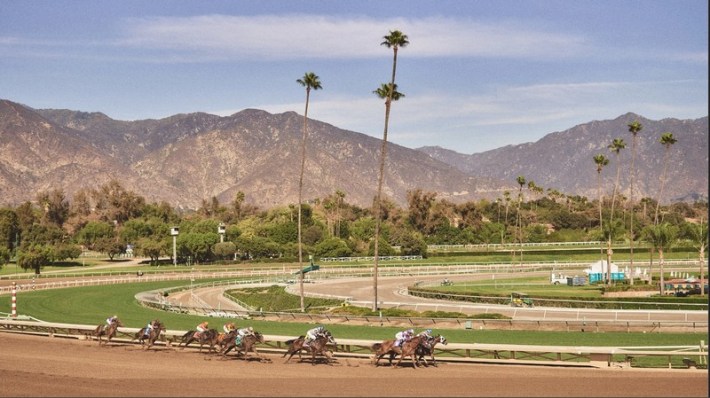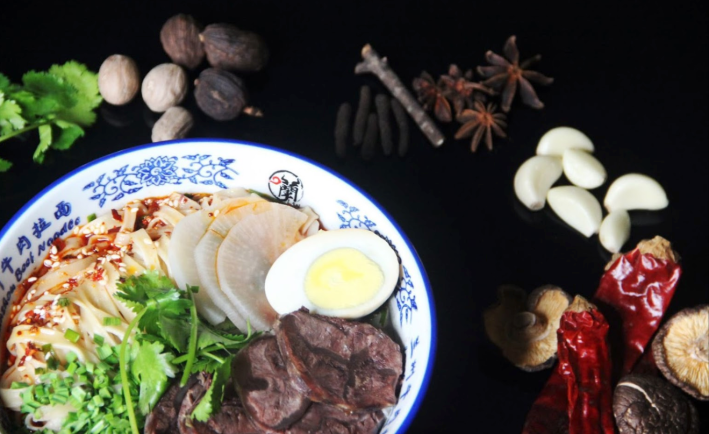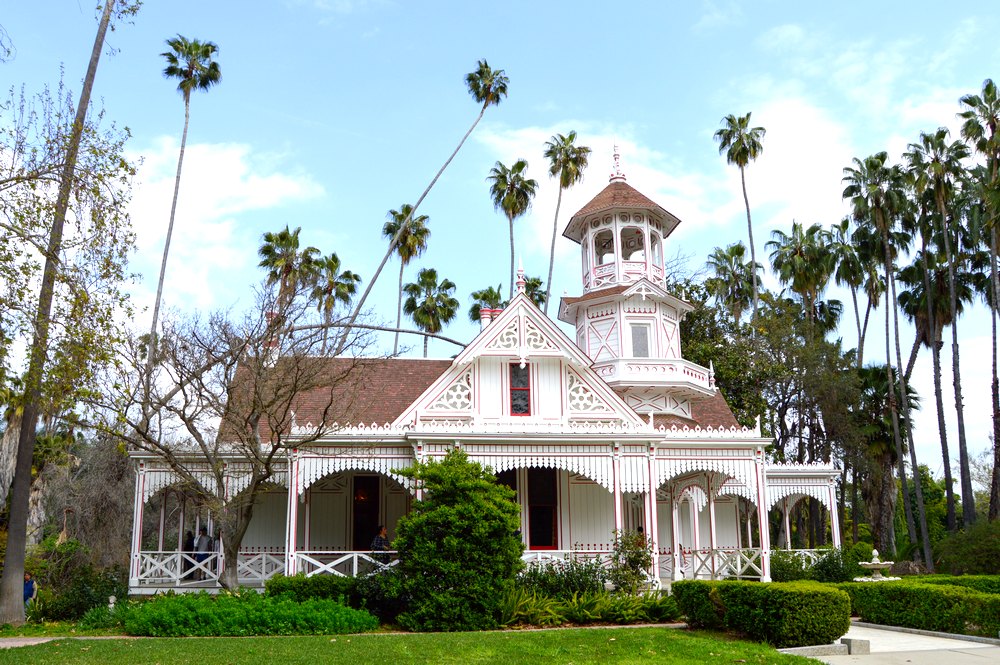L.A. TACO is currently on its biggest mission yet: to create a food guide for every single neighborhood in Los Angeles! Along the way, we will also be releasing brief histories of each neighborhood to understand L.A.’s past and present a little more, all the while celebrating how each and every square inch helps make our fine city the best in the world. Today we’re taking a look at Arcadia.
Arcadia was established at the base of a canyon in today’s San Gabriel Mountains in the former site of a Tongva settlement known as Aleupkinga, said to be at least 8,000 years old. As discussed in last week’s Pasadena history, the arrival of the Spanish in the 18th century led to this society's forcible relocation, widespread death, cultural erasure, virtual enslavement, and the theft of their homeland under the Franciscan Catholic mission system. The San Gabriel Mission Arcángel was the fourth such mission, established in 1771, ten years before El Pueblo de Los Angeles was founded. Despite resistance over their resettlement, this Tongva land was stolen and Aleupkinga became the property of the Mission San Gabriel.
Following its War of Independence in 1821, Mexico seized much of the Mission’s lands, dividing it and selling it as different ranchos. What we know today as Arcadia, as well as nearby towns such as Monrovia, San Marino, and Sierra Madre, was initially based in what was once called Rancho Santa Anita. This 13,319 acre land was issued to “Perfecto” Hugo Reid, a Scottish born critic of the mission system and a chronicler of the Tongva who had become a legal Mexican citizen, and his Tongva wife, Victoria Bartolomea Comicrabit. As soon as he petitioned to take possession of the rancho land in 1839, Reid built an adobe house on it and began to farm it and plant vineyards. Alta California Governor Pio Pico recognized his claim in 1845. Two years later, Reid sold the land to London-born businessman Henry Dalton, who had already purchased neighboring Rancho Azusa de Duarte in 1844.
Enter Elias Jackson “Lucky” Baldwin—a Midwesterner with a colorful life story, including multiple marriages and almost as many brushes with death—whose nickname came from a lifelong record of entrepreneurial and wagering successes. Initially, Baldwin found achievement through horse training, saloon, grocery, and grain trading businesses in Indiana. Heading west with his wife and child in a wagon caravan during the Gold Rush, he narrowly avoided a deadly attack along the way, then became a picks-and-shovels success providing supplies to fortune-seeking miners in San Francisco. Baldwin’s triumphs continued for decades, during which he amassed a tremendous fortune, buying hotels and resorts and all manner of luxury investments throughout the West. Moving to Southern California in 1875 amid the region's larger population boom, Baldwin spent $200,000 to purchase 8,000 acres of Rancho Santa Anita, which had been steadily carved up and changing hands since the 1848 Treaty of Guadalupe transitioned the lands to U.S. possession. Baldwin found the territory in Rancho Santa Anita to be a paradise, snatching them up in addition to the tens of thousands of extra acres he’d eventually buy in our region, at least some of which—Baldwin Hills on the former La Cienega Rancho—still bear his name. As always, seeing ever more opportunity before him, Baldwin turned some of Rancho Santa Anita into subdivisions, creating 11.1-square-mile Arcadia, a name chosen for the historically beautiful Peloponnesian wilds of the same name, and Monrovia next door.
Not only was Baldwin the father of Arcadia, which was incorporated as a city in 1903, he also became its first mayor. Around this time, Arcadia had a population of around 500 people, as well as a booming little economy largely based on entertainment, sporting, hospitality, and gambling, which included many of Baldwin’s own interests. Several sites related to Baldwin’s flamboyant life and insane amount of business interests are preserved in the area, notably Queen Anne Cottage at Baldwin Lake and the Rancho Santa Anita Depot, all housed at The Los Angeles County Arboretum and Botanic Garden, which the city opened in 1956 in the heart of Baldwin’s former rancho land.

That’s right across from Santa Anita Park, which itself evolved from Baldwin’s own racetrack on his land, which fizzled after in 1909 after the state outlawed gambling. Arcadia continued to mostly be a small, quiet, ranching and farming town, though it did house a hot air balloon observation training school during World War I. The 1920's and 30's began to witness the beginnings of the urbanization that continues today, as civic institutions and paved streets started to spread and the population grew in turn.
Santa Anita Park officially opened at the end of 1934, bringing droves of Angelenos to its gates. In 1942, the grounds at Santa Anita Racetrack would become the site of The Civilian Assembly Center, the longest running and largest processing and holding center for Americans of Japanese heritage, who were being persecuted for their race in the face of war with Japan. More than 18,000 people would live there, often in horse stalls and other unfit, unsanitary conditions, as well as under armed guard, while the U.S. government worked on finishing more permanent internment camps such as Manzanar and Tule Lake. Many Japanese and Japanese-American locals, long prominent in the SGV's agricultural communities, would never return to this area. Later in the war, the grounds, then known as Camp Santa Anita, would hold thousands of prisoners of war from Nazi general Erwin Rommel’s German Afrika Korps soldiers.
Post-war, things boomed in Arcadia like they did in many parts of the nation, with suburbs expanding and full neighborhoods seemingly appearing overnight. With its proximity to Pasadena and Los Angeles, and ample space for the large houses of high society’s scions, Arcadia’s population would multiply two and a half times between 1940-1950. The city’s infrastructure grew in turn, including the start of the commercial district known as West Arcadia Hub in 1951. A lot of people were left out of the boom, naturally, as property sale contracts included a provision that new residents could only sell their homes to White Protestants, which had been already weakened by a Supreme Court ruling in 1948 and was later struck down by the Court's ruling in 1965.

According to a 1985 story in the L.A. Times, Arcadia’s population was roughly 99% White into the late seventies, despite a long and often ignored history of influential pioneers from China, Japan, the Philippines, and South Asia and their offspring populating, planting, and tending the San Gabriel Valley region stretching back to the 19th century. The 1980s saw a large uptick in new Asian residents, with Arcadia and its neighboring suburbs preferable to Chinese, Filipinos, and Koreans with means who were seeking proximity to the city, suburban comforts, and a consistently awarded public school system. As a community formed, the appeal of somewhat insular communities serving and supporting Asian immigrants and Asian Americans made it an ever more attractive destination for those seeking balanced proximity and distance from L.A. itself.
The Asian population of Arcadia surpassed a 7% Latino population at 9% by 1985. In another 15 years, Arcadia’s population would be counted as 59.2% Asian by a 2010 census. Today, both regional and innovative Chinese cuisine, among other great cooking from various cultures, is one of the major draws for outsider visitors to the city, with Arcadia's population of residents having Chinese heritage being surpassed only by nearby Monterey Park in Los Angeles as a whole.
Despite the city's relative diversity, prestigious Arcadia High School insists on having its sports teams and mascots named after the Apache and using Native stereotypes, an ongoing source of friction between numerous voices in the community that want to keep it and groups of Native American activists who have threatened to sue, along with others who object to the usage.
You might need a lot of money should you want to stay in Arcadia beyond dim sum. Business Insider ranked it the 23rd richest neighborhood in Southern California in 2014 and the 5th most expensive housing market in 2016, while CNN ranked it 7th for the highest median U.S. home costs in 2012.







